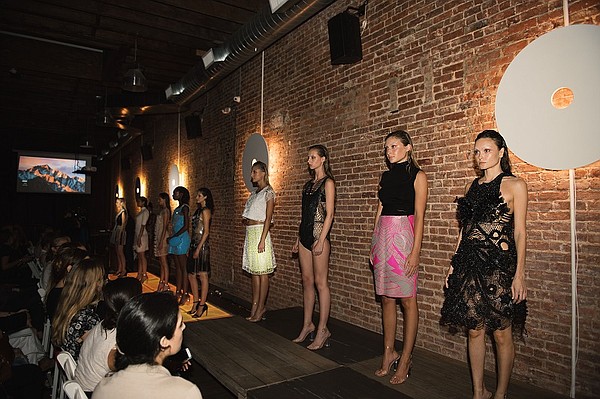Our Return to the Great Outdoors: Fueling the Outdoor Lifestyle
From retail destinations, office amenities, new services, and sustainable design, we’re seeing a surge in the desire to reconnect with the great outdoors across every consumer-facing environment. In our latest series, Our Return to the Great Outdoors we’ll share how brands can embrace this trend to create both safe and memorable outdoor experiences that will resonate with consumers long after COVID-19 fades.
In times of uncertainty, consumer expectations don’t change completely—they simply evolve, pivot and accelerate, raising the bar and amplifying the demand for new, relevant experiences. In 2020, a major shift in consumer behaviors welcomed an uptick in outdoor recreation. With health in mind and a new appreciation for wide open spaces, consumers and developers have turned their focus to sustainable environments that are connected to nature. In the third and final part of this series, we’ll be exploring elements that enhance this connection through amenities, services, or new standards:
Outdoor Activities
According to Outdoor Industry Association, Americans have flocked to outdoor recreation amid COVID-19 restrictions limiting indoor experiences. Across the country, hiking and camping sites have reported their busiest months in years, and according to the N.P.D Group, the sales of leisure bikes have jumped 121 percent. With this at play, it seems active, outdoor lifestyles are here to stay. There are many ways brands and businesses across all sectors can create environments that this complement trend including adding bike repair shops and storage to properties or introducing outdoor focused products/services.
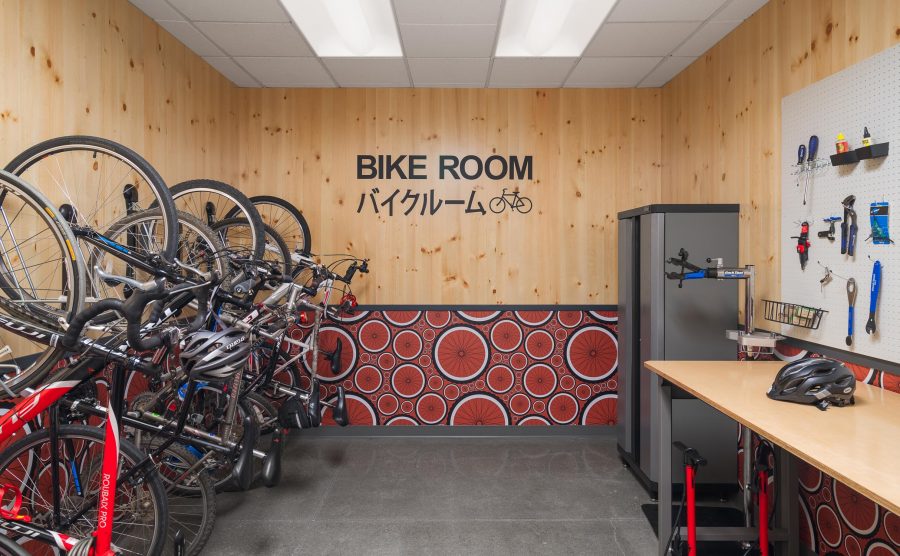
Seasonal Solutions
As the seasons change and COVID-19 remains, brands and business will have to adjust to new weather. Even with safety concerns, many consumers will want to continue shopping in-store, dining out, and enjoying the outdoors. For restaurants, outdoor spaces will have to be winterized and property managers will have to develop outdoor amenities that that support year-round engagement (e.g. Astroturf, outdoor fire pits, or green space that can be a pop-up playground in the summer and an ice rink in the winter).

Simulating the Senses
Even for completely indoor environments, there are many ways the outdoors can be brought inside to cater to consumers new found appreciation of nature. This can be accomplished by:
- Adding sound machines, greenery, and natural materials to a space, whether it is part of a shopping, living, or working environment
- Creating environments that have greater access to natural light or easy access to the outdoors via doors and functional windows
- Prioritizing WELL-Certified environments to build more sustainable spaces that promote overall health and wellbeing
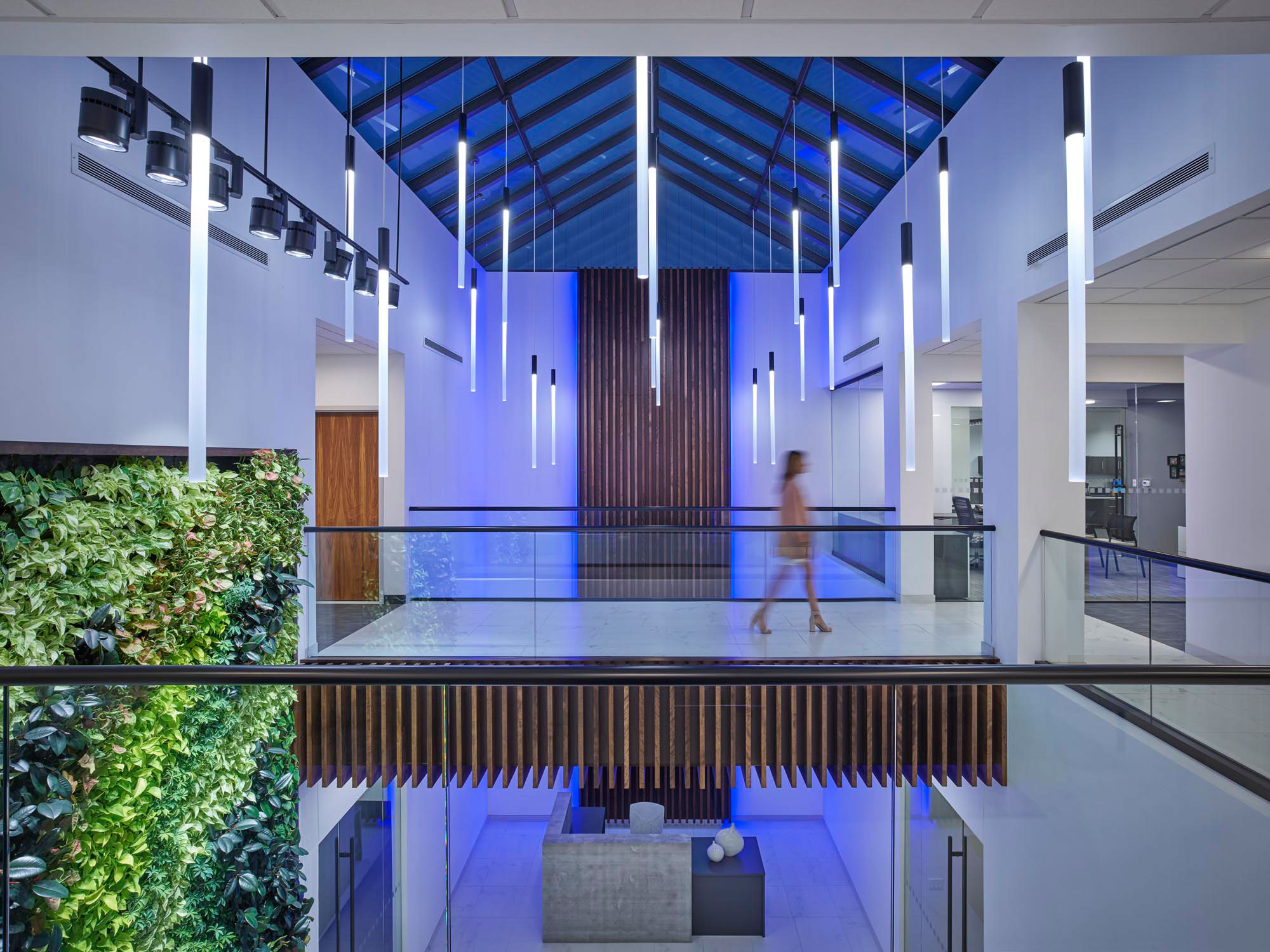
AIS Headquarters
Overall, consumer behaviors prove that outdoor spaces are worth the investment. Whether it’s incorporating amenities and resources to make outdoor activities more assessible, creating flexible spaces that can easily be transformed for seasonal outdoor use, or adding outdoor flair inside, give consumers what they want and help them better connect with the great outdoors.
Northwestern University Kellogg School of Management
Diversity at NELSON: Celebrating National Diversity Month
In honor of National Diversity Month, we’re connecting you with a handful of Teammates to highlight diverse backgrounds and what diversity means to them! Sharing their experiences and perspectives, keep reading to learn more about diversity at NELSON.
Chelsea Cheng | Senior Project Manager

What makes you unique?
Back in the ‘80s, our family was applying to move to the U.S. from Hong Kong as some of my father’s siblings and their families were already living in NYC. The application took a long time. I was studying in an all-girls Chinese middle school back then. All subjects were taught in Chinese. Even our English teacher was Chinese. Since our immigration application didn’t seem to have any status change, my parents sent me to a boarding school so I could start getting acquainted with the culture and start learning English. Although I could read and write, I could barely understand or speak it. In 1991, at the age of 15, my parents and I flew to St. Johnsbury, Vermont where I would attend high school. I had previously visited my cousins, uncles, and aunts in the U.S., but had never been to Vermont. I saw a video (VHS, ha) sent from the school and for whatever reason, I skipped the summer program in which I could have kick started life as a dorm student and had a chance to make friends before school started.

I didn’t understand a thing the lady told me upon check-in, so I just nodded. My parents left, I missed the orientation and found myself alone in the dorm. I cried.
Well, that lasted about a week (or maybe less). I was not shy or afraid to speak English (you’d be surprised how many foreign students refused to do so), did not lock myself in the room, and I started to make friends with both local students and dorm students. Our immigration application was approved half a year later. My parents moved to NYC, but I stayed in Vermont and finished high school. I was there for three years, then went to college, started a job in the city, later on got married and started a family.
The story here is that being a foreigner/minority, we can’t hide in a corner and be sorry for ourselves. Even when I spoke with an accent, we were all equal especially when my family chose to pay for an opportunity like that. And being alone without my family nearby taught me how to live with other people and to respect each other. Even though we are all different, we are all equal.
What kinds of cultural food, attire, or traditions are part of your story?
Hong Kong had (and still has) a unique culture as it was based on traditional Chinese, but was highly influenced by western culture as it was ruled as a British colony for many years. Being a trading hub and the tip of the South China Sea, all sorts of people lived there. Different cultural food/restaurants even entertainment (movies, TV shows) were available. The language spoken there is Cantonese. Cantonese is a dialect that includes slang but also it was mixed in English words. Definitely not an easy language to learn as there are no basic rules to it.
Adrian Tejada | Architect
What makes you unique?
I’m a proud American Dominican-Mexican, with most of my pride either situated somewhere in central Texas or Santo Domingo, Dominican Republic.
What kinds of cultural food, attire, or traditions are part of your story?
The ethnic side I lean to most is my Dominican side because of my love toward our unique music, Merengue, and our delicious food of course! Looking at you mofongo!

Chiyoon Min | Senior Design Architect

What makes you unique?
I’m from Seoul, South Korea, and I moved to Boston in 2014 to study at Harvard GSD. I met my wife in Boston and we got married in 2017, and our daughter Claire was born in 2019. My wife is originally from China, but she moved to Canada when she was very young. Then she moved to Boston in 2009 to study at MIT Ph.D.
 As you can see, we have 4 nations in one family! South Korea, USA, Canada, and China. We communicate in English, but sometimes, we can find similar words/expressions in Chinese and Korean.
As you can see, we have 4 nations in one family! South Korea, USA, Canada, and China. We communicate in English, but sometimes, we can find similar words/expressions in Chinese and Korean.
What kinds of cultural food, attire, or traditions are part of your story?
In the photo above, my wife and daughter are wearing traditional Korean costumes, not me (my parents either). It was our daughter’s 100 days party which is a tradition in Korea. The food/costume are all Eastern (rice cake)/Western(cake) mix. Having diversity in the family gives us fun/meaningful advice for each other and thinking about what’s more/most important—not about ideologies and hatred, mainly about love, care, and trust.
Holly Williamson | Regional Design Leader

What makes you unique?
I was raised celebrating Christmas and Easter. For me these holidays are about the spirit evoked from them: Christmas is about being with family and close friends and sharing; while Easter is about spring regrowth and chocolate bunnies.
When I married my husband, who was raised Jewish, we blended all our holidays together and celebrate them all. We maintain the traditions that we grew up with, while participating in holidays that are relatively new to us. As a result, our son celebrates all the holidays, which is a unique experience.
What kinds of cultural food, attire, or traditions are part of your story?
Christmas and Hanukah look a little bit like this: plates of latkes next to jars of Christmas cookies, lighting the menorah while decorating the Christmas tree, listening to Christmas music while opening Hanukah gifts.
For Easter we decorate hard boiled eggs, then bring them to the Passover Seder to peel and dip them in salted water as tradition suggests.
I love being exposed to new traditions, understanding others religious upbringing, and being open to all. It may not be for everyone, but it works for us!
Julie Park | Interior Designer

What makes you unique?
I came to the United States from South Korea when I was a teenager. I have been exposed to different cultures throughout my life. That helps me understand and see many things from various perspectives.
What kinds of cultural food, attire, or traditions are part of your story?
Korean culture is the root of my life. I love Korean food, especially anything with Kimchi!
What do you want your teammates to know about you or your cultural norms/experiences?
Korean food and K-beauty
University of Georgia Clark Howell Hall
Retail Revised: Dedicated Convenience
In-store retail is back, but with its return, there is no doubt that the way we shop, or want to shop, has changed forever. With the growth of e-commerce and the adoption of new shopping habits, retailers must act fast to create modern, in-store experiences that complement their digital presence while differentiating their offering from the saturated retail market.
Whether it’s online or in-store, revised retail strategies are crucial for brands as consumer behavior evolves. The stores of tomorrow must serve a purpose beyond that of the pure sales opportunity and transform into a destination where service, convenience, and discovery take place. In our latest ‘Retail Revised’ series we’ll be discussing key themes retailers must consider to enhance their in-store experience. This week, we discussing key opportunities in providing more convenience:
With the rapid growth of e-commerce, convenience has taken on new meaning as customers expect brands to provide services that help to streamline their busy lives and save time. Retailers must quickly adapt and identify how their shopping experience can support this desire. Whether it’s offering more clear and dedicated operations for fulfillment or creating new concepts to get closer to consumers, there are many clever and valuable ways to enhance convenience in shopping environments.
When activating these opportunities, there are key principles to consider:
- Identify underutilized space OR consider non-customer-facing real estate options
- Provide designated support and empower your employees with the right tools
- Keep disruption of parking lots and in-store browsing zones to a minimum
- Create an integrated customer journey with added communication and tech
- Remember your brand purpose
And here are a few brands that are providing highly convenient services and environments:
Target’s “New Glow”
Target just revealed a new, multi-year “glow up” plan to renovate existing locations to improve the shopping experience both in-store and online. The remodel involves creating a designated and expanded area for in-store pick-up, return, and registry operations to better accommodate customers and reduce confusion in the traditional one-lane customer service areas the stores previously feature. Wider isles are also part of the plan to create more space for in-store shoppers and employees fulfilling online orders.
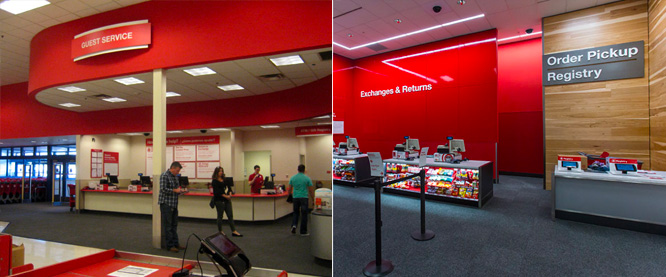
Photo: Target
Whole Foods Dark Store
Whole Foods Market has opened its first online-only store located in Brooklyn, NY. Referred to as a “dark store,” the miniature warehouse-like space will fulfill delivery orders only and help Whole Foods better meet rising customer demand for grocery delivery service. Here, online orders can be packed for pickup or delivery.

Photo: Whole Foods
NELSON Click-and-Collect Concepts
Adjusting to safety demands and new consumer behaviors, NELSON Worldwide explored the idea of creative click-and-collect concepts that could serve retailers and mixed-use developments. The Concierge Box is a mobile pop-up concept that can be placed outside of the traditional store to get closer to consumers or move pick-up services away from merchandise zones. Check out more of these concepts here.
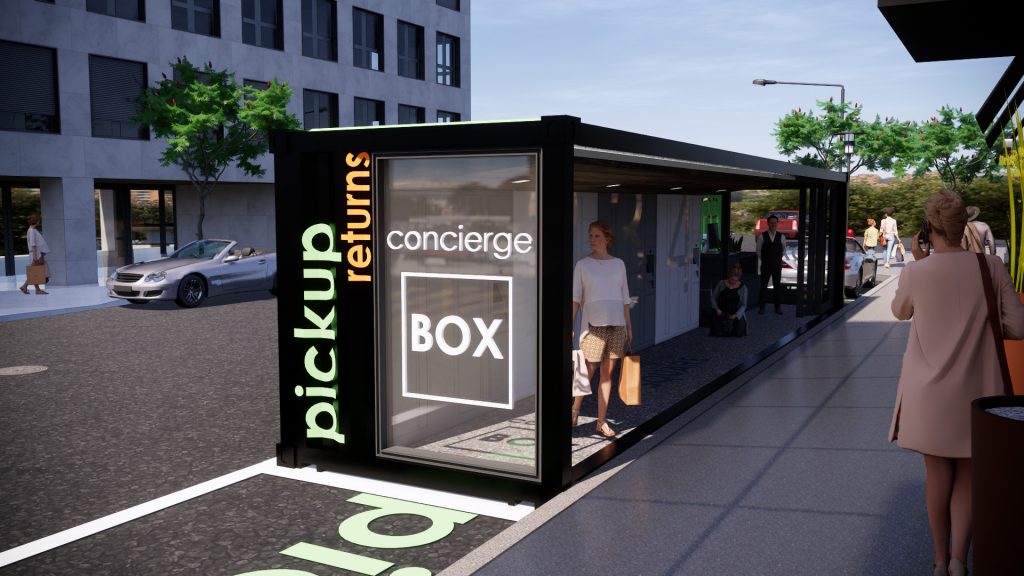
Photo: NELSON Worldwide
The overall goal is to make purchasing easy enough that shoppers keep coming back for more, but brands must be strategic about how they approach these strategies. A demand lies in safe and convenient options, but tomorrow that may change and these concepts must be flexible enough to evolve with the consumer.
Fashion Meets Technology
For NYC Fashion week, FashionHub organized an event and panel discussion to explore the quickly expanding role of technology in fashion, apparel and retail. The evening was structured around two themes; “Fashion Tech and Sustainability” and “Can Retail Tech Save The Retailers?”.
The discussion spanned from an overview of the fast-approaching technologies that will soon be impacting these industries, to the ones a bit further out that we should all keep an eye on.
Sustainability
The apparel industry is quickly coming to terms with the fact that it’s not only a major polluter but also very wasteful, its estimated that the world has a 10-year supply of clothing sitting in warehouses right now. A lively discussion was had on which technologies have the potential to address these issues.
- Bio Materials: Whether developed from corn, kelp, coffee or mycelium (mushrooms!), bio materials are being experimented with to find sustainable options to reduce the industry dependency on petroleum-based ones. Particularly interesting was the research into bio materials that can be “grown” with inherent coloration, thus eliminating the need for garment dyeing and the pollution that comes from it.
- Block Chain (yes, Block Chain really is everywhere): Groups are working on block chain systems to track raw materials through to end-use to create a “closed loop” system, where waste can be mitigated and re-use maximized.
- Mass Customization: This one really has some momentum with the technology, infrastructure and business model quickly evolving. Although the kinks will take some time to work out, body scanning for the perfect fit, paired with on-demand fabrication (3D printing, knitting, robot sewing and bonding) will allow for the win-win of superior merchandise and near zero waste of resources or money.
Retail Tech
All agreed that although retail is traditionally a slow-to-adapt industry, it’s at a tipping point now with available technology quickly catching up with consumer expectations.
- Unite Merchandise and Content: A new generation of field-tested technology is creating interactive displays that keep consumers eyes on the product (and off their phones), delivering product specific content as consumers interact with the merchandise. Allowing for online level depth of information (i.e. product attributes, company bio, sustainability details, etc.).
- “No one wants to be 1st or 3rd”: It became a little bit of a venting session for the technologist in the room, as they pleaded with the retail industry to shift away from its default secrecy and risk adversity, and embrace the methods that have allowed high tech to evolve quickly and effectively. Methodologies like “A / B testing”, competitor collaborations and embracing failure are needed if retail is going to evolve at the speed everyone agrees it needs to.
